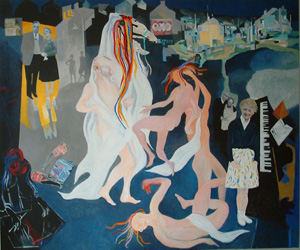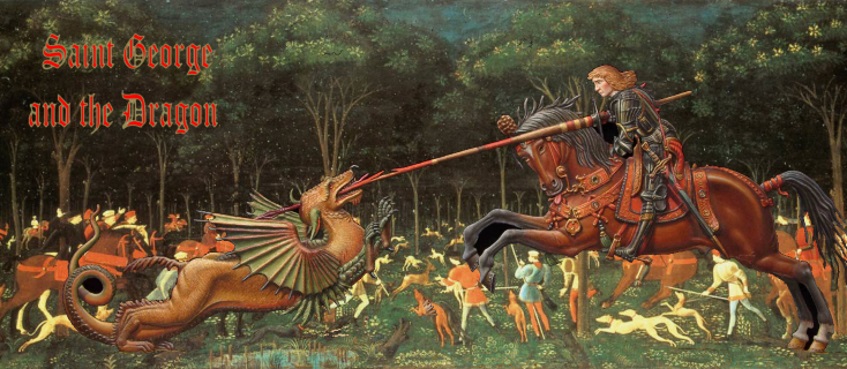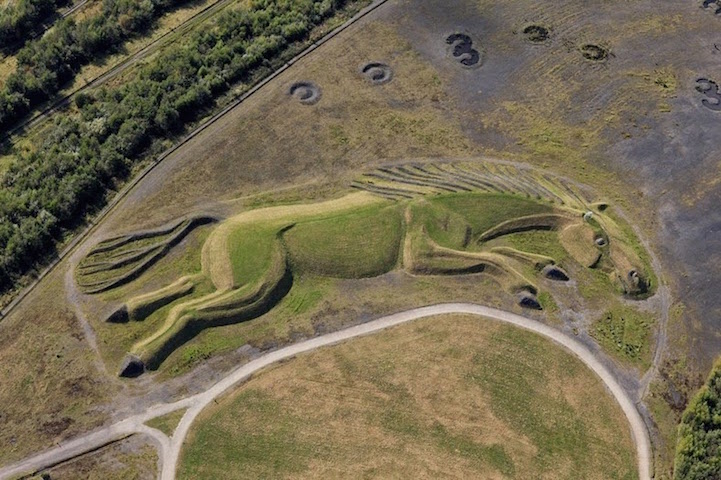 I am of course interested in proving the existence of psychic ability for those who don’t already know. Being psychic I recognize certain events and patterns in other peoples lives that to me look like they have experienced something psychic.
I am of course interested in proving the existence of psychic ability for those who don’t already know. Being psychic I recognize certain events and patterns in other peoples lives that to me look like they have experienced something psychic.
Most people think of premonitions as quite dramatic and significant. The truth is usually the opposite. Most are very mundane and barely appear on the radar of consciousness. I had a lot of waking premonitions, but then my brain screwed up during illness. I think my sub-conscious started dumping info into my conscious. Anyway, I’m back to normal now, or at least as normal as can be.
As everyone who has had these experiences knows, sometimes you get to see a premonition in a dream or waking consciousnes. But often you don’t and what seems to happen is you will get hints of things as if something is trying to surface from the sub-consious. When this happens you find yourself talking about something, writing about or painting, drawing or singing about something which then just happens to come true. A probable coincidence if it happens once and is a bit vague. But when it happens more than once and there are clear details then I think it’s time to put your hand up and say “darn it’s time to re-think time.”
I think the late, great Marc Bolan, lead singer of the 70’s group T Rex and the man that started glam rock had dreams and some level of knowledge about his death. Below are some evidence to suggest this was so.
- 1. Painting by Rene Magritte called September 16, painted 1957. On his last tour of France Marc visited the Louvre where he spent hours staring at this painting. The moon in the painting depicts the same phase as the moon was on the night he died when the car his girlfriend Gloria was driving hit a tree similar to the one in the picture, in the early morning of September 16th, 1977.
2. Poem predicting his death
“Sycamore of sorrow
Pray I’m swallowed
In the swell of your yelling leafy breast
My crippled bended chest is shamed
Through flaming crowsfeet, soaring nouns of Norse confession.
Dark earth gremlins, rootlegged hobbling
In the cryptess of my turned wound
Ill-famed fair prince, steal my lightening
Stake me with steel, for my haughtiness
Straddle my storm head with your abyss shroud
Call me harlot, call me wormy wordler
Ever so, but out loud”
The biography Ride a White Swan: The Lives and Death of Marc Bolan written by the journalist Lesley-Ann Jones wrote about his death. In the book it states that although it was thought Bolan was killed when his car hit the sycamore tree he was, in fact, killed when the car hit a steel-reinforced fence post and he suffered a horrific head injury from a steel eye bolt in the fence penetrating his skull. In an interview his older brother said on viewing his body that there was no signs of injury except for a small bruise on his forehead. I conclude that it penetrated the back of his head severing or rupturing the brain stem which would have killed him instantly. In the poem “Through flaming crowsfeet, soaring nouns of Norse confession,” appears to be a reference to the Norse tradition of putting the body of a warrior on a ship and setting it on fire. Also the practice of confession before death is a catholic ritual.
3. In the lyrics to the song Easy Action he sings
“life is the same as it always will be,
Easy as picking foxe’s from a tree.”
The car he was killed in had the number plate
FOX as clearly visible in the photo of the wrecked car.
4. Marc Bolan was travelling home and was killed in a car crash a mile or so from his home. Gloria Jones his girlfriend was driving at the time. The song The Road I’m On is about a journey home that won’t take him home and repeatedly mentions Gloria and talks of the end of summer Autumn with the leaves falling. He died in September, the end of summer. The theme of the song seems to suggest a journey that ends in a departure from home with references to roaming and the robin flying to a new nest at the end of summer as well as a reference to the cards that’s showing…..the hand your dealt with, fate in other words. At the time these lyrics were written he hadn’t met Gloria Jones.
The Road I’m On
Since we last loved Gloria
the suns been up and down that many times
since we last loved Gloria
I’ve been sharing love with women of kinds
Summer ends and leaves start dying
you won’t see robin crying
he knows where the sun is hiding
to another nest he’s flying
You gave me reason now I’ve gotta roam
‘cos the road I’m on gal won’t run me home
Hear my words Gloria
echoing from mountains with a cry
Hear my words Gloria
you’ll see them gal reflecting off the sky
Hear it in the cold wind blowing
hear it in the river’s flowing
no-one in the mind that’s growing
see ‘cos the cards that’s showing
You gave me reason now I’ve gotta roam
‘cos the road I’m on gal won’t run me home
Summer ends and leaves start dying
you won’t see robin crying
he knows where the sun is hiding
to another nest he’s flying
You gave me reason now I’ve gotta roam
‘cos the road I’m on gal won’t run me home
‘cos the road I’m on gal won’t run me home
5. In the lyrics to the song Celebrate Summer he
Sings Summer is heaven in ’77
Bolan died in the late summer of 77
 cumentary contends that the main type of weathering on the Sphinx and surrounding enclosure walls showed evidence of prolonged rainfall. Since the Sphinx is today in a desert region with little rain, the presence of weathering by rain would date the Sphinx to an earlier time when there had been extensive rainfall in this region. West suggested that the Sphinx may pre-date the Ancient Egyptian culture and may have originated between 10,000 to 5000 BCE. This challenged the conventional dating of the Sphinx of 2500 BCE.
cumentary contends that the main type of weathering on the Sphinx and surrounding enclosure walls showed evidence of prolonged rainfall. Since the Sphinx is today in a desert region with little rain, the presence of weathering by rain would date the Sphinx to an earlier time when there had been extensive rainfall in this region. West suggested that the Sphinx may pre-date the Ancient Egyptian culture and may have originated between 10,000 to 5000 BCE. This challenged the conventional dating of the Sphinx of 2500 BCE.
 One of the most ancient & mythical customs practised in Wales is the custom of Mari Llwyd or “Grey Mare” in English. This tradition marked the passing of the darkest days of midwinter. These long, cold nights were a time of fire festivals in Wales and across the Celtic World and various customs were used to celebrate the passing of the Old to the New Year, the end of the Autumn/Winter period and the return of the growing and harvesting period of Spring/Summer.
One of the most ancient & mythical customs practised in Wales is the custom of Mari Llwyd or “Grey Mare” in English. This tradition marked the passing of the darkest days of midwinter. These long, cold nights were a time of fire festivals in Wales and across the Celtic World and various customs were used to celebrate the passing of the Old to the New Year, the end of the Autumn/Winter period and the return of the growing and harvesting period of Spring/Summer. These festivals were not always popular during the Methodist Revival and gained a bad reputation for drunkenness and vandalism. Many a sermon in the Chapels was preached against the then thought of pagan practice.
These festivals were not always popular during the Methodist Revival and gained a bad reputation for drunkenness and vandalism. Many a sermon in the Chapels was preached against the then thought of pagan practice.

